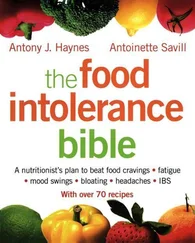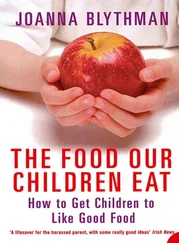Neal D. Fortin - Food Regulation
Здесь есть возможность читать онлайн «Neal D. Fortin - Food Regulation» — ознакомительный отрывок электронной книги совершенно бесплатно, а после прочтения отрывка купить полную версию. В некоторых случаях можно слушать аудио, скачать через торрент в формате fb2 и присутствует краткое содержание. Жанр: unrecognised, на английском языке. Описание произведения, (предисловие) а так же отзывы посетителей доступны на портале библиотеки ЛибКат.
- Название:Food Regulation
- Автор:
- Жанр:
- Год:неизвестен
- ISBN:нет данных
- Рейтинг книги:4 / 5. Голосов: 1
-
Избранное:Добавить в избранное
- Отзывы:
-
Ваша оценка:
- 80
- 1
- 2
- 3
- 4
- 5
Food Regulation: краткое содержание, описание и аннотация
Предлагаем к чтению аннотацию, описание, краткое содержание или предисловие (зависит от того, что написал сам автор книги «Food Regulation»). Если вы не нашли необходимую информацию о книге — напишите в комментариях, мы постараемся отыскать её.
Food Regulation: Law, Science, Policy, and Practice
Food Regulation: Law, Science, Policy, and Practice, Third Edition,
Food Regulation — читать онлайн ознакомительный отрывок
Ниже представлен текст книги, разбитый по страницам. Система сохранения места последней прочитанной страницы, позволяет с удобством читать онлайн бесплатно книгу «Food Regulation», без необходимости каждый раз заново искать на чём Вы остановились. Поставьте закладку, и сможете в любой момент перейти на страницу, на которой закончили чтение.
Интервал:
Закладка:
However, medical food is a narrow and special category. Medical food claims must be based on therapeutic or chronic medical needs. For instance, foods for those with genetic metabolic disorders. A medical food must be intended for a patient who has a limited or impaired capacity to ingest, digest, absorb, or metabolize ordinary foodstuffs or certain nutrients, or who has other special medically determined nutrient requirements.
While some diseases benefit from the consumption of certain types of foods, if those foods are available as part of a healthy diet and the nutrients within those foods are able to be absorbed by the patient, then the foods would not be considered medical foods. Rather, medical foods are foods that are specially formulated and processed for a patient who requires use of the product as a major component of a disease or condition’s specific dietary management. For example, vitamin C to cure or prevent the scurvy is not a medical food because the disease can be cured or prevented with a healthy diet. On the other hand, a food that eliminates or significantly restricts phenylalanine for treatment of phenylketonuria could be considered a medical food.
5.9 THERAPEUTIC AND RELATED DISEASE CLAIMS
A subcategory of health claims is drug claims. A drug claim is a claim that states or implies that a product is intended for use in the diagnosis, cure, mitigation, treatment, or prevention of disease.
A product with an unapproved drug claim may result in multiple violations of the FD&C Act. The most obvious potential violation is the prohibition on false or misleading claims, but this is the least of the concerns. FDA has far easier options than being drawn into a factual battle over the quality and the quantity of scientific research supporting a therapeutic claim. Specifically, FDA is more likely to bring actions for violation as follows:
Marketing an unapproved new drug. 68
Misbranding a drug by failing to include adequate directions for use. 69
FDA may bring both charges against a product with unapproved therapeutic claims. This is sometimes referred to as the FDA “double squeeze.”
5.9.1 Marketing an Unapproved New Drug
A product intended to diagnose, cure, mitigate, treat, or prevent a disease is a drug under the FD&C Act and must meet the regulatory requirements for drugs. 70 The claims made on the product’s labeling are a primary means of establishing the intended use of a product, but FDA is not limited to the product’s packaging. Any evidence of the product’s intended use may be used by FDA to establish that a product is intended to diagnose, cure, mitigate, treat, or prevent a disease. Disease claims, consumer testimonials, citation to scientific or clinical research, and word of mouth can all provide evidence that a product is intended to diagnose, cure, mitigate, treat, or prevent disease.
Any product that is not generally recognized, among experts qualified by scientific training and expertise to evaluate the safety and effectiveness of drugs, as safe and effective for the intended use (GRASE) is considered a “new drug.” 71 Marketing a new drug in the United States without an FDA‐approved new drug application (NDA) violates the FD&C Act. 72
Regardless of the quantity and quality of science supporting a therapeutic claim, that claim violates the FD&C Act if the product and claim are not governed by an approved NDA. Truth of the claim is no defense. FDA generally gets considerable deference in this area because unapproved therapeutic claims not only create the potential for economic loss, but may also put consumers’ health at risk. 73 When unapproved new drugs are promoted for diseases, FDA is reasonably concerned that consumers may forgo necessary medical diagnosis and treatment to the detriment of their health.
5.9.2 Misbranded Drug Violations Based on Inadequate Directions for Use
Under section 502(f)(1) of the FD&C Act, FDA requires drugs to have adequate directions for safe and effective use. 74 Many medical conditions are not amenable to self‐diagnosis and treatment by individuals who are not medical practitioners. For example, cancer may require advanced technology using radiological imaging and blood analysis that require a trained medical practitioner for diagnosis and treatment. Therefore, FDA may determine that adequate directions for use cannot be written for some therapeutic claims on a product such that a layperson can use the drug safely for its intended purposes.
Notes
1 1 21 C.F.R. § 101.14(a)(1).
2 2 21 C.F.R. § 101.14(c).
3 3 FDA, Qualified Health Claims: Letter of Enforcement Discretion—Walnuts and Coronary Heart Disease (Mar. 9, 2004) (Docket No. 02P‐0292).
4 4 21 C.F.R. § 101.14(e).
5 5 A disease means damage to an organ, part, structure, or system of the body such that it does not function properly (e.g., cardiovascular disease), or a state of health leading to dysfunction (e.g., hypertension). See 21 C.F.R. § 101.93(g) regarding disease and dietary supplements.
6 6 FDCA § 403(r)(3)(A)(ii).
7 7 21 C.F.R. § 101.14(a)(4).
8 8 21 C.F.R. § 101.14(e)(6).
9 9 21 U.S.C. § 343(r)(6) and 21 C.F.R. § 101.93.
10 10 The Dietary Supplement Health and Education Act of 1994 (DSHEA) established some special regulatory requirements for structure–function claims with dietary supplement s. These differences are discussed in detail in Chapter 11.
11 11 “Nutritive value: is defined in 21 C.F.R. § 101.14(a)(3), but this applies only to health claims and not in the context of structure–function claims. This intersection of drug, dietary supplement, and conventional food has become extremely complicated. In a rare moment of regulatory candor, FDA recognized that its distinctions in this area sometimes fly in the face of common sense. See FDA, CFSAN/Office of Nutritional Products, Labeling, and Dietary Supplements, Discussion of a Conceptual Framework for Structure and Function Claims For Conventional Foods, Meeting Summary (Feb. 16–17, 2000).
12 12 58 Fed. Reg. 2487 (Jan. 6, 1993).
13 13 See 21 C.F.R. § 101.78 Health claims: fruits and vegetables and cancer.
14 14 The distinction between structure/function claims and dietary guidance is a minor one because under the law both are outside of health claim regulation. Therefore, the law does not concern itself whether the statement, “Carrots are good for you,” is dietary guidance or a structure/function claim.
15 15 Adapted from Paula Kurtzweil, Staking a Claim to Good Health, FDA CONSUMER, SPECIAL ISSUE, FOCUS ON FOOD LABELING (Nov.–Dec. 1998).
16 16 21 C.F.R. § 101.72.
17 17 21 C.F.R. § 101.73.
18 18 21 C.F.R. § 101.75.
19 19 21 C.F.R. § 101.74.
20 20 21 C.F.R. § 101.76.
21 21 21 C.F.R. § 101.77.
22 22 21 C.F.R. § 101.78.
23 23 21 C.F.R. § 101.79.
24 24 21 C.F.R. § 101.80.
25 25 21 C.F.R. § 101.81.
26 26 21 C.F.R. § 101.82.
27 27 21 C.F.R. § 101.83.
28 28 Specifically, §§ 303 and 304, which amend, respectively, FD&C Act §§ 403(r)(3) and 403(r)(2) (21 U.S.C. §§ 343(r)(3) and (2)).
29 29 FDA, GUIDANCE FOR INDUSTRY, NOTIFICATION OF A HEALTH CLAIM OR NUTRIENT CONTENT CLAIM BASED ON AN AUTHORITATIVE STATEMENT OF A SCIENTIFIC BODY (June 11, 1998), http://www.cfsan.fda.gov/~dms/hclmguid.html (last visited Mar. 15, 2008).
30 30 FDA, FOOD LABELING GUIDE, APPENDIX C (Revised Nov. 2000) http://www.cfsan.fda.gov/~dms/flg‐6c.html (last visited Mar. 15, 2008). There is also a nutrient‐content claim for choline available based on authoritative statements. See supra the discussion of nutrient content claims.
31 31 FDA, HEALTH CLAIM NOTIFICATION FOR WHOLE GRAIN FOODS WITH MODERATE FAT CONTENT (Dec. 9, 2003), http://www.cfsan.fda.gov/~dms/flgrain2.html (last visited Mar. 15, 2008).
Читать дальшеИнтервал:
Закладка:
Похожие книги на «Food Regulation»
Представляем Вашему вниманию похожие книги на «Food Regulation» списком для выбора. Мы отобрали схожую по названию и смыслу литературу в надежде предоставить читателям больше вариантов отыскать новые, интересные, ещё непрочитанные произведения.
Обсуждение, отзывы о книге «Food Regulation» и просто собственные мнения читателей. Оставьте ваши комментарии, напишите, что Вы думаете о произведении, его смысле или главных героях. Укажите что конкретно понравилось, а что нет, и почему Вы так считаете.












